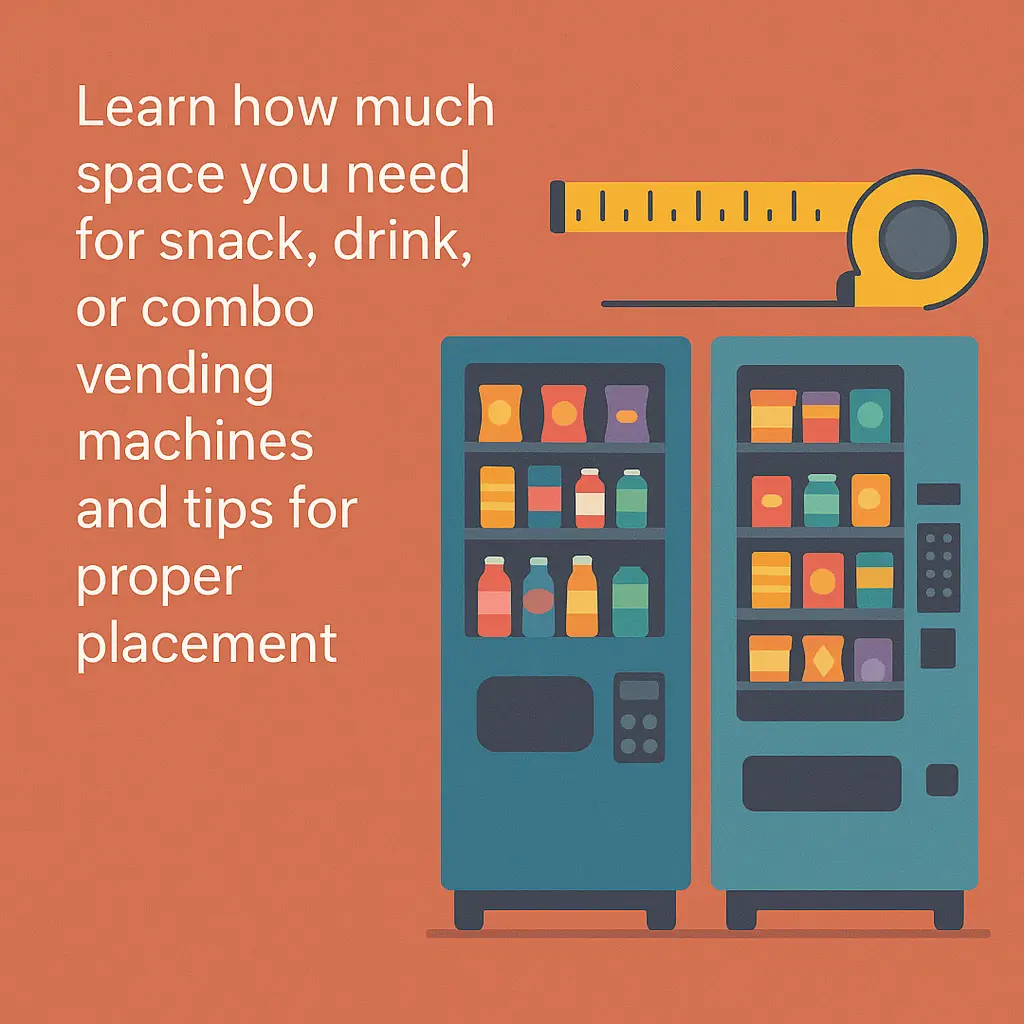Vending Machine Size and Space Requirements
Learn how much space you need for snack, drink, or combo vending machines and tips for proper placement.
Back to Vending Info For Businesses ResourcesLearn how much space you need for snack, drink, or combo vending machines and tips for proper placement.
Back to Vending Info For Businesses ResourcesTo allow easy access and meet ADA standards, vending machines should have at least 3 feet of space in front for users and restocking access. Placement should also avoid blocking emergency exits or foot traffic areas, especially in high-use buildings.
![]() Combo machines can save space while offering diversified products
Combo machines can save space while offering diversified products
![]() Leave 3 feet clearance for ADA compliance and easy access
Leave 3 feet clearance for ADA compliance and easy access
![]() Measure doorways before installation to ensure proper fit
Measure doorways before installation to ensure proper fit

When planning to install vending machines at your workplace, school, or residential property, space and placement are essential to functionality and safety. Most full-size snack or drink machines range from 36 to 40 inches wide, 30 to 35 inches deep, and 72 inches tall. Combo machines can vary but generally fall within the same footprint. Leave at least three feet of clearance in front for user access and restocking staff. This also supports ADA accessibility compliance, ensuring you serve all your visitors or occupants fairly.
Doorframe width is another critical consideration—standard machines may not fit through some older interior doors. Always measure entryways before committing to a model. Smart vending equipment and AI coolers may offer a smaller footprint or modular design that makes them practical for compact layouts. These can be attractive alternatives in offices or multi-unit properties with limited space.
If you're outfitting a breakroom or common area, place machines along walls near electrical access and away from obstructions. Avoid high-traffic bottlenecks like main hallway intersections or entryways unless sufficient space is available. For multi-machine setups, maintain several feet between machines for ease of use and servicing. Also consider whether the flooring can support the combined weight of loaded machines, especially on elevated stories.
Some locations benefit from choosing flexible vending models. For example, AI-powered coolers and micro markets adapt to available wall space or corners, offering modern features without bulk. In some manufacturing settings, tailored vending configurations can also optimize utility and space efficiency. See how customized vending programs solve these challenges.
If you're exploring vending options for your business, Vending Exchange can help simplify the process. Delivery, Installation and Equipment is provided at no cost to you - vendors provide the machines, keep them stocked, and handle all servicing. Whether you need a provider or full-service management, just fill out the form on this page to get started.
A standard vending machine typically requires a footprint of about 36-40 inches wide, 30-35 inches deep, and 72 inches tall, with at least 3 feet of clearance in front for proper access.
Not always. Many vending machines require doorways at least 36 inches wide. It's crucial to measure door and hallway dimensions before delivery.
Leave at least 3 feet of clearance in front for ADA compliance and restocking. Lateral space depends on the number of machines and user flow.
Combo machines and some AI coolers are more compact, making them ideal for offices, lobbies, or smaller common areas.
Machines should be on level, stable flooring that can support their weight. Avoid placing them on carpeted or uneven surfaces.
Yes, vending machines need a standard 120V outlet nearby. Micro markets and AI units may need additional connections depending on their setup.
Smaller machine models or customized layouts may be recommended. A vending expert can help assess what's feasible for your space.
Breakrooms, lounges, and quiet hallway areas with nearby power sources work best. Avoid exits, entrances, and major walkways.
Yes, improper placement can block exits, reduce accessibility, or create slip/trip hazards. Following guidelines minimizes these risks.
Yes, as long as there's enough space between machines and the area supports user flow and service access.